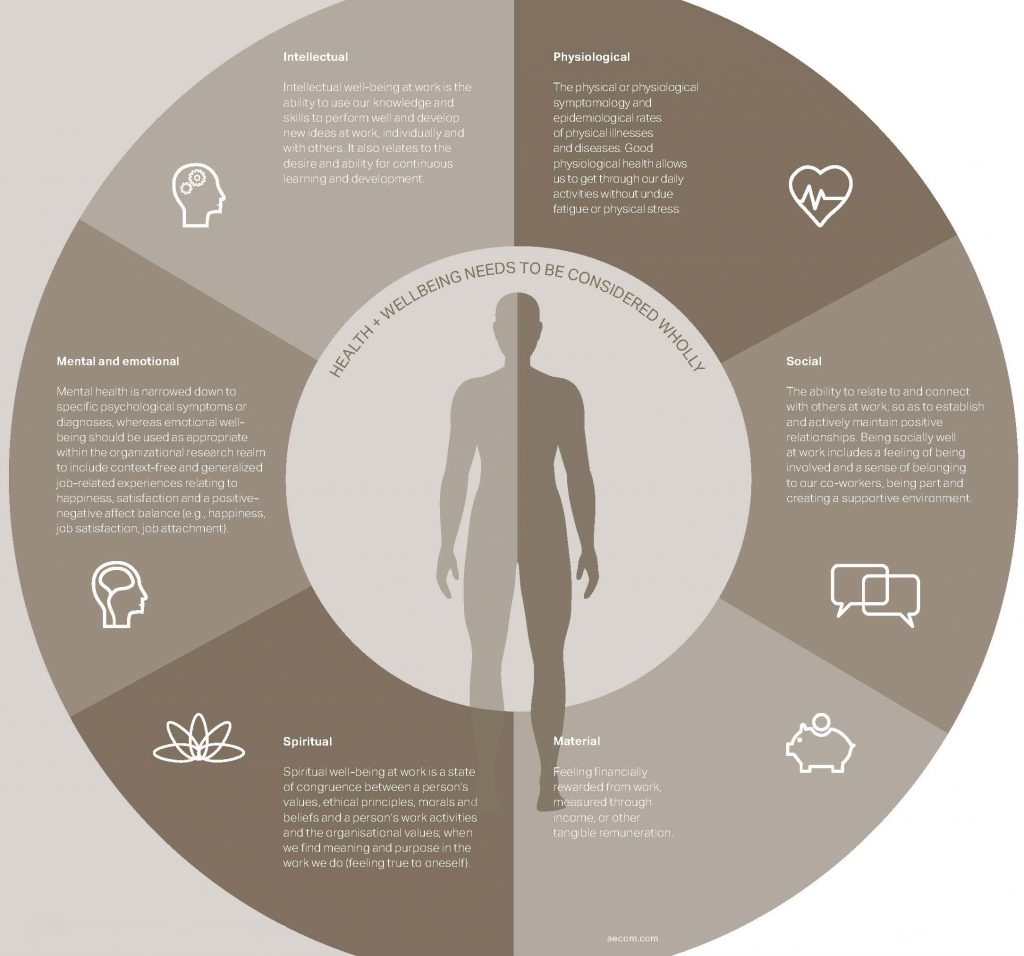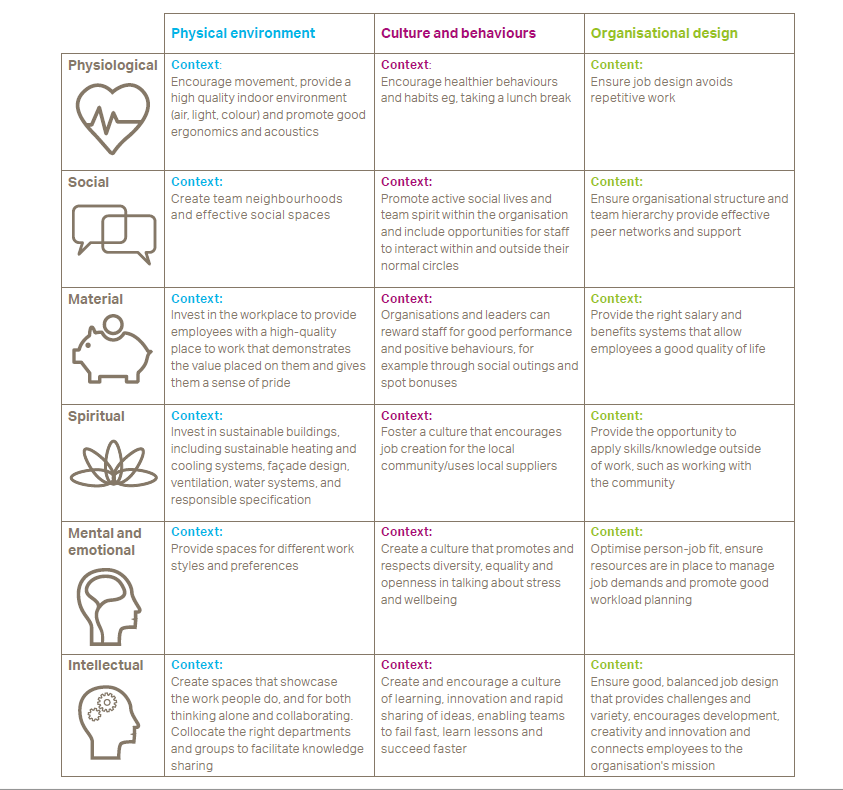A journey to wellbeing
There’s endless anecdotal and academic evidence linking good employee health and happiness with increased job satisfaction and productivity. Workplace strategy and design experts Hilary Jeffery and June Koh, both reporting from London, and Mica Manaois, in Chicago, explore our holistic approach to creating healthy workplaces that encourages people to feel well at work and flourish in their jobs.
Organisations are no longer primarily concerned with the bottom line and driving energy and space efficiencies. Today, one of the biggest questions our clients ask us is, how can we make work ‘good’ for people and drive real value from the work environment?
Through research and by sharing expertise, we’ve developed a holistic approach to understanding, encouraging and developing health and wellbeing in the workplace that considers not only building operation and design but strategies and processes that, when working together, encourage employees to flourish, allow healthy and sustainable work relationships and ensure each person in the organisation thrives and does their best work.

While health is often defined as the absence of illness, wellbeing is increasingly thought of as having the psychological, social and physical resources needed to face particular challenges in life, according to the International Journal of Wellbeing. We believe workplace health and wellbeing is also affected by intellectual, spiritual and material factors, and that all of these need to be considered to truly inspire and support employees and create a healthy and resilient organisation.

What influences wellbeing at work?
How well we feel at work is influenced by a set of interrelated universal and organisational factors.
Universal: these include things that an organisation has little or no control over, such as family life or a bereavement. These events affect a person’s health and wellbeing, which in turn affect their work — and the organisation.
Organisational: these relate directly to work and can be broken down into organisational context and organisational content, as outlined below.
Organisational context
- Physical workplace
- Cultural norms
- Leadership style
- Availability of resources/support to encourage healthy working — eg, healthy eating campaigns
Organisational content
- Job content — eg, repetitiveness, meaningfulness
- Job demand — eg, complexity, quantity, pace
- Job resources
- Level of autonomy
The resilience scale
Good organisational context and content will have a positive impact on all aspects of a person’s health and wellbeing at work, increasing their resilience to challenges and changes both in the workplace and in everyday life.
There will be times when specific workplace events or changes impact on a person’s wellbeing — for example, when a company restructures or during an office move. A person’s resilience levels will determine for how long and to what extent these events affect them.
As the rate of change within workplaces increases, we believe employee resilience levels will become a crucial factor in driving organisational effectiveness, employee engagement and productivity.


Increasing wellbeing, sustaining resilience
Organisations can use a range of tools and initiatives to encourage health and wellbeing in the workplace. We’ve identified some of them, within organisational context and content, and have divided them into three categories: physical environment, culture and behaviours and organisational design. When all three are working together, it’s possible to achieve a sustained increase in wellbeing and resilience levels.






